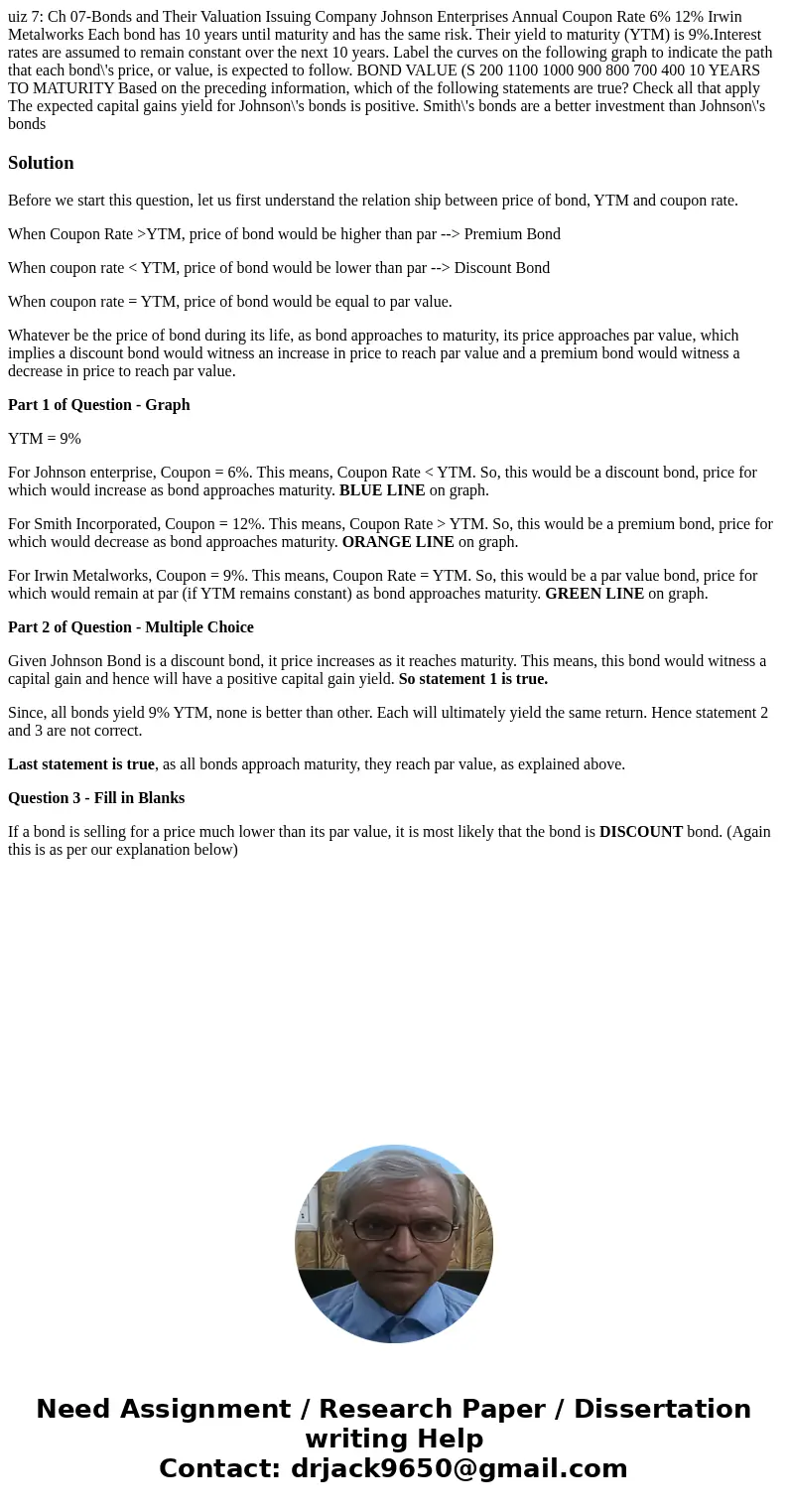uiz 7 Ch 07Bonds and Their Valuation Issuing Company Johnson
Solution
Before we start this question, let us first understand the relation ship between price of bond, YTM and coupon rate.
When Coupon Rate >YTM, price of bond would be higher than par --> Premium Bond
When coupon rate < YTM, price of bond would be lower than par --> Discount Bond
When coupon rate = YTM, price of bond would be equal to par value.
Whatever be the price of bond during its life, as bond approaches to maturity, its price approaches par value, which implies a discount bond would witness an increase in price to reach par value and a premium bond would witness a decrease in price to reach par value.
Part 1 of Question - Graph
YTM = 9%
For Johnson enterprise, Coupon = 6%. This means, Coupon Rate < YTM. So, this would be a discount bond, price for which would increase as bond approaches maturity. BLUE LINE on graph.
For Smith Incorporated, Coupon = 12%. This means, Coupon Rate > YTM. So, this would be a premium bond, price for which would decrease as bond approaches maturity. ORANGE LINE on graph.
For Irwin Metalworks, Coupon = 9%. This means, Coupon Rate = YTM. So, this would be a par value bond, price for which would remain at par (if YTM remains constant) as bond approaches maturity. GREEN LINE on graph.
Part 2 of Question - Multiple Choice
Given Johnson Bond is a discount bond, it price increases as it reaches maturity. This means, this bond would witness a capital gain and hence will have a positive capital gain yield. So statement 1 is true.
Since, all bonds yield 9% YTM, none is better than other. Each will ultimately yield the same return. Hence statement 2 and 3 are not correct.
Last statement is true, as all bonds approach maturity, they reach par value, as explained above.
Question 3 - Fill in Blanks
If a bond is selling for a price much lower than its par value, it is most likely that the bond is DISCOUNT bond. (Again this is as per our explanation below)

 Homework Sourse
Homework Sourse